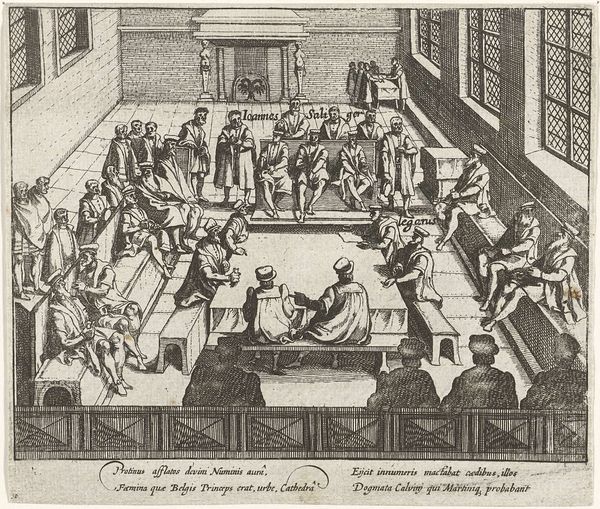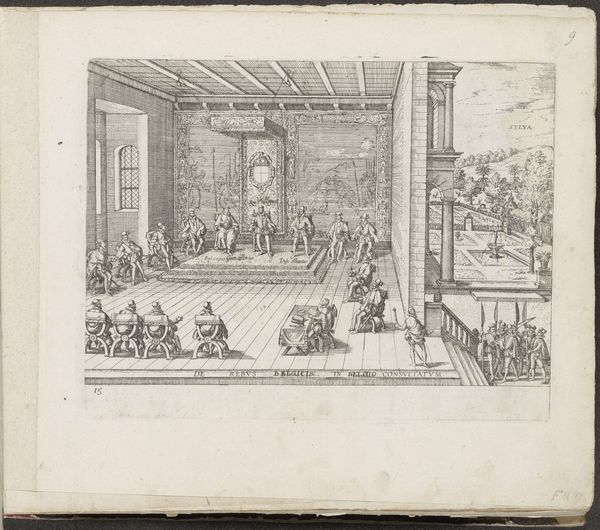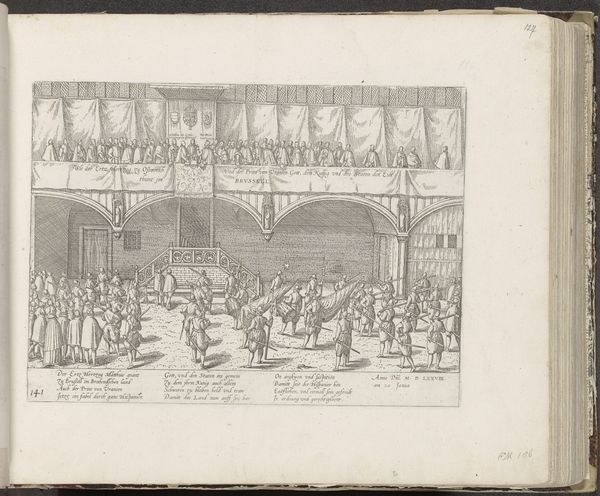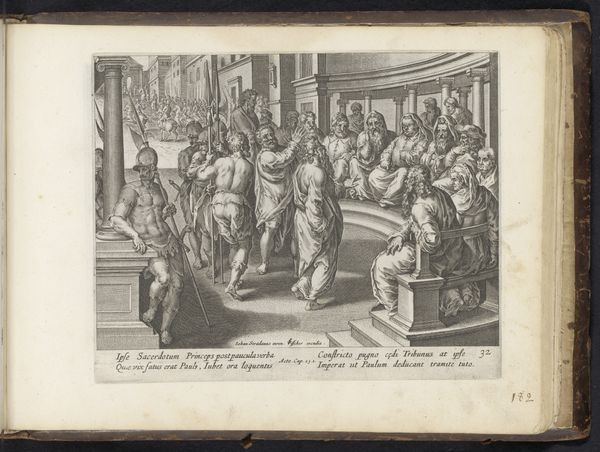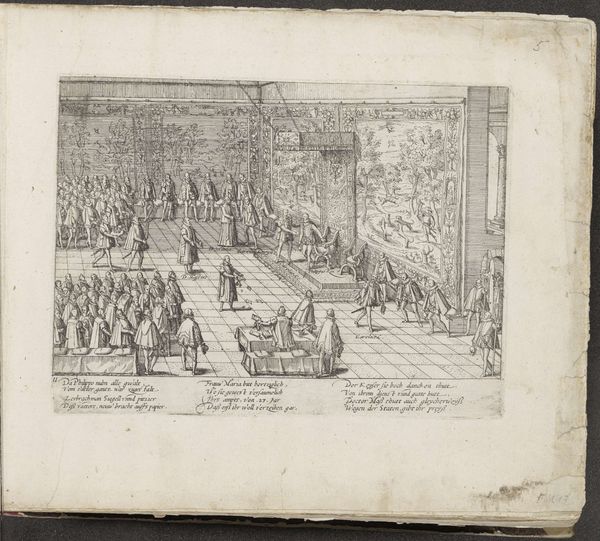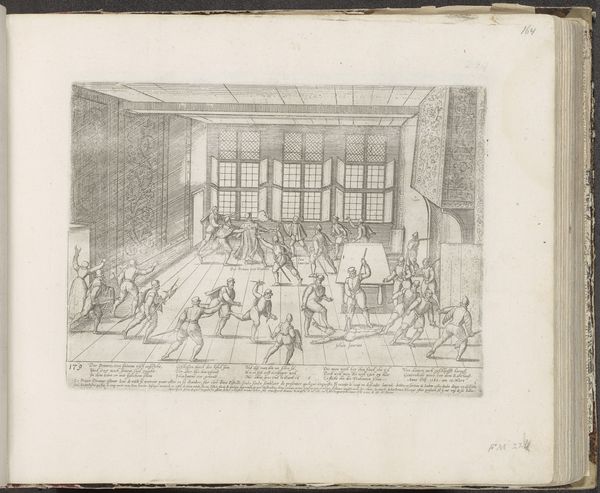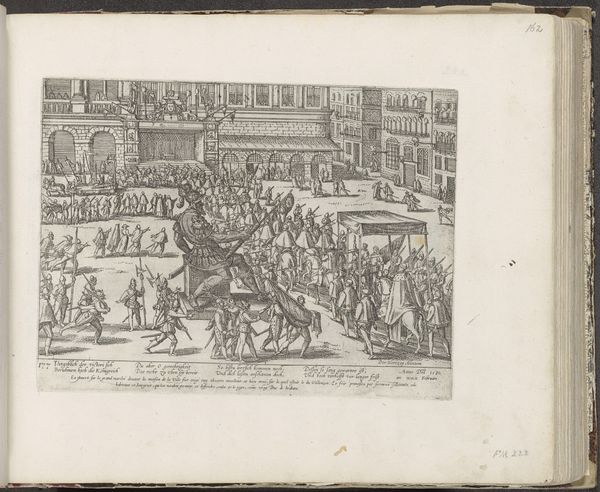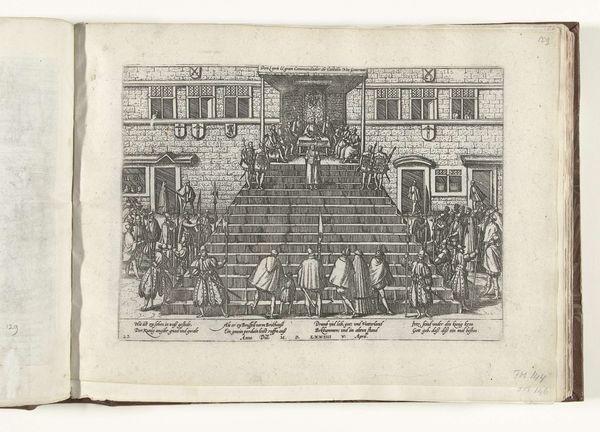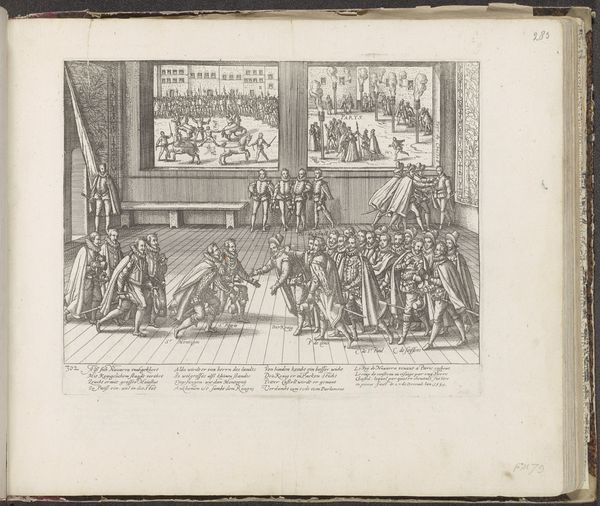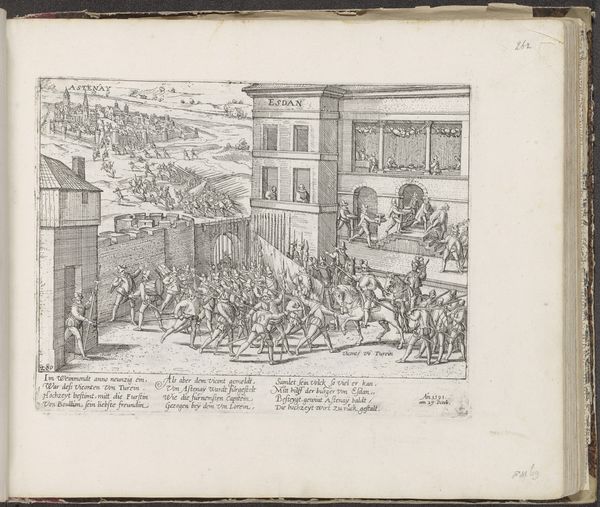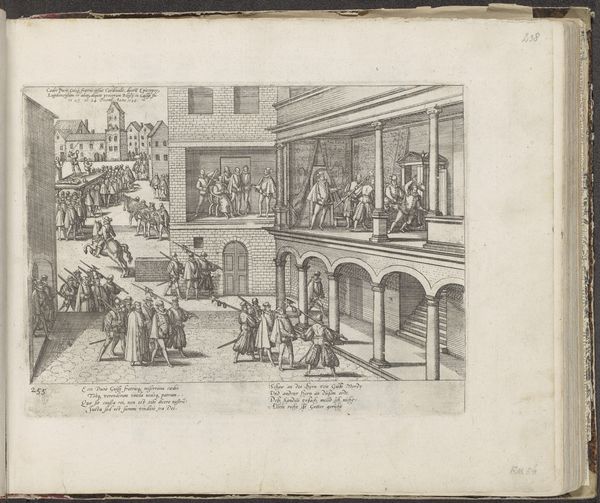
print, engraving
#
aged paper
#
toned paper
#
medieval
#
narrative-art
# print
#
pen sketch
#
sketch book
#
personal sketchbook
#
pen-ink sketch
#
pen work
#
sketchbook drawing
#
history-painting
#
storyboard and sketchbook work
#
northern-renaissance
#
sketchbook art
#
engraving
Dimensions: height 213 mm, width 274 mm
Copyright: Rijks Museum: Open Domain
Curator: This print, created in 1577 by Frans Hogenberg, is called "Verbod op protestantse prediking te Antwerpen, 1577," or, "The Prohibition of Protestant Preaching in Antwerp, 1577." It's currently held at the Rijksmuseum. Editor: Immediately, I’m struck by how calm the scene appears, given the subject matter. It’s meticulously rendered. It almost feels…domestic, like a council meeting in a particularly ornate living room. Curator: You pick up on that calmness, but to me it conveys a deliberate, almost oppressive order. The rigid lines of the benches, the rows of seated figures…it speaks to the silencing of dissenting voices. Editor: Yes, the composition certainly underscores the power dynamics. It’s a historical depiction, an engraving, so it has the precision one would expect. I imagine these prints served a propagandistic function. The composition feels... staged. Look at how they are carefully distributed, the gazes, how everyone has his own place in that theatre of power... Curator: Absolutely, it documents a key moment in Antwerp’s history during the Dutch Revolt. The prohibition of Protestant preaching was a major flashpoint, leading to increased tensions and eventually open rebellion. Editor: Exactly, these engravings were tools, weren’t they? Meant to shape public opinion, to solidify narratives, even to intimidate. When you examine these works we can have a broader understanding of power and authority, especially through the lens of religion. And, even further, they highlight the delicate balance of cultural and social reformation, with all its human rights dimensions. Curator: What's also curious, for me, is the very medium itself. The artist used a print – to represent the ban on free speech. Almost poetic! I keep thinking, “if only these characters could see our world.” A world where art could spark debate. Editor: I think understanding works like these is crucial in that regard. Art isn’t just an object; it’s a record. The narrative here reflects the complexities of that time, with ripple effects that extend into our current discourses on religious freedom and human rights. So to be aware is paramount to freedom, really.
Comments
No comments
Be the first to comment and join the conversation on the ultimate creative platform.
